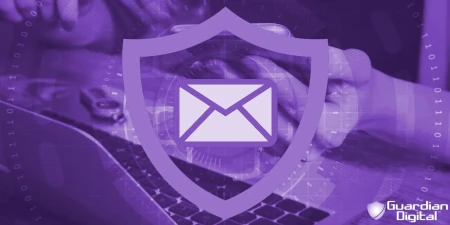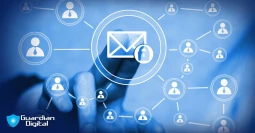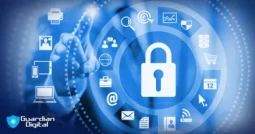How Can Two-Step Verification and Security Keys Protect Google Workspace Accounts?

Recent data reveal that a staggering data breaches emanate from poor or stolen passwords">81% of data breaches emanate from poor or stolen passwords, which indicates the dire need to improve security. Ransomware and phishing are some of the cyber threats that are on the rise, making password-only authentication hazardous. Combine Two-Step Verification and physical security keys in addition to your security framework to safeguard sensitive data from highly sophisticated attacks.
Advanced security methods discussed in this guide will strengthen cloud-based e-mail systems, making unauthorized access through malicious means highly difficult. Needless to say, these steps will be essential in safeguarding your information and keeping you well at ease.
The Hidden Vulnerabilities of Passwords Alone
Even strong passwords can fail to protect cloud email security services. Even with our best intentions, passwords can often be predictable, reused, and/or stolen using common techniques such as phishing and other attacks. According to data analysis, weak or recycled passwords are one of the primary factors leading to account breaches.
Adding 2SV or other security measures creates an additional barrier, even if an attacker has your password. Once 2SV is in place, anyone attempting access with only a password will hit a brick wall, making entry much harder and blocking access from every angle.
Two-Step Verification: Building Your First Line of Defense
To enable 2SV:
Start by navigating to the Google Admin Console.
Admin Console > Security > Authentication > 2-Step Verification > Setup
Two-step verification (2SV) strengthens cloud email security services by adding a second layer to the login process, protecting against vulnerabilities that even strong passwords can't fully guard against.
There are several ways to use 2SV. Mobile prompts are fast and easy, while app-based codes are more secure, generating one-time codes independent of cellular traffic. SMS codes are still popular but much weaker due to possible SIM-swapping attacks. For those handling susceptible information, security keys offer an even more vital safeguard beyond app-based or SMS codes.
Security Keys: Physical Barriers for High-Stakes Protection

With a security key, users must be physically present at login; even if a password is compromised, an attacker can't access the account without the key. This approach strengthens account protection and greatly reduces the risk of unauthorized access.
2SV and Security Keys Implementation Across Your Organization to Maximize Protection
Activating 2SV and security keys across your organization adds a network-wide defense beyond individual logins. Administrators can turn 2SV on for everyone using the Security settings in the Admin Console, then choose which methods—cumbersome mobile prompts, SMS codes, or app-based codes—each user will best be able to use to lock down their account.
Forcing 2SV on high-risk roles is where additional protections can be used most. This includes the option for administrators to choose which of the three general types of security keys are allowed for users in different organizational roles. By assigning some kinds of security keys to some users with vulnerable accounts, administrators add resilience and, therefore, ensure that critical access points remain secure.
Double the Defense: Why 2SV and Security Keys Work Better Tog ether.
ether.
2SV and security keys form an effective partnership to defend against attacks before they reach your data. They prevent phishing attacks, significantly reduce account takeover risks, strengthen compliance, and encourage more consistent usage without adding to employee inconvenience.
This two-tiered approach makes every login, in effect, a mini-fortress, particularly for cloud email services. Even when an attacker manages to get your password, it will be very hard for them to do anything meaningful with it. Realistically, this affords a quite accessible ramp-up of security across the board.
Best Practices to Avoid Pitfalls: A Smooth Security Rollout.
The first and most frequent mistake is failing to deploy 2SV across the organization. Leaving certain departments vulnerable means attackers may still find an entryway; by rolling out 2SV for all, administrators can shut off these vulnerable spots and build a wall protecting everyone within.
Another threat is that, though convenient, SMS-based codes tend to allow for a hijacking of one's phone numbers via SIM swapping. App-based solutions or physical keys by admins will be far safer for their users than those much more likely to be compromised.
Keep Up: Hardening Your Accounts Against Emerging Cyber Threats
Passwords no longer serve their purpose in today's advanced cyber threats; therefore, two-factor authentication and security keys create a line of defense for high-risk positions such as executive directors and administrators handling sensitive information within cloud email security services. Periodic review of security practices and risk understanding is a solid way to keep your data safe while keeping attackers out. This is much more than adding layers; hardening access means staying one step ahead of ever-evolving threats.
Other FAQs
- What Is Guardian Digital EnGarde Cloud Email Security?
- FAQs: What Are Some Examples of Malicious Code?
- How to Properly Scan Your Windows Computer for Malware & Remove Malware from Your PC
- FAQs: What Are Denial of Service (DoS) Attacks?
- FAQs: Why Outsource Businesses Email Security?
- What Is Domain Spoofing?
- What Are Insider Threats & How Can You Reduce Your Risk?
- The Silent Assassins: How Impersonation Attacks Target CEOs via Email
- How Can I Choose the Right Email Security Service for My Organization?
- What Are the Benefits of Managed Security Services Providers (MSSPs)?





